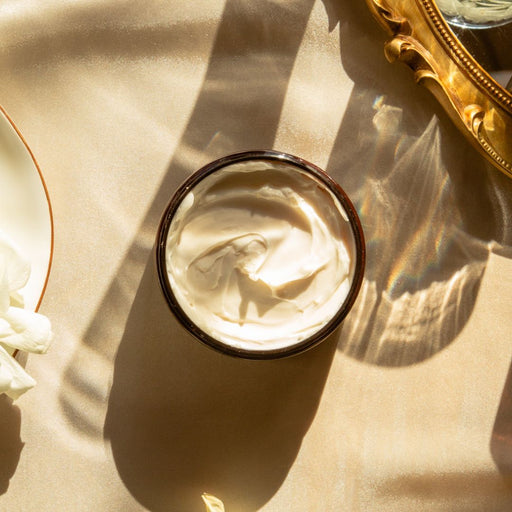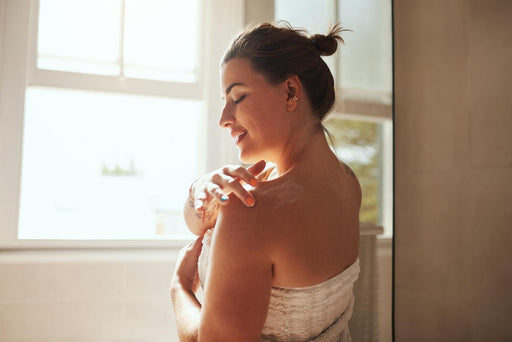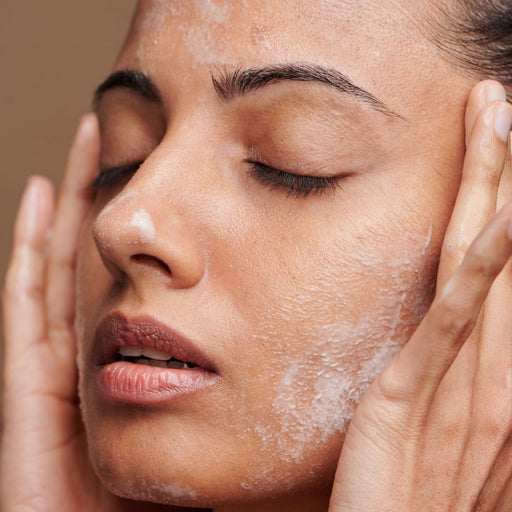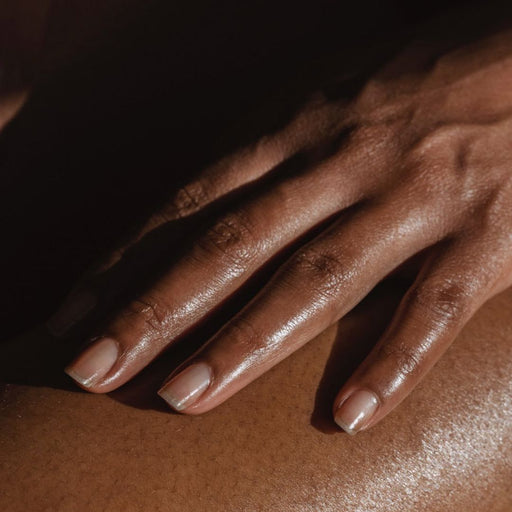In 2021, Americans drank more than 3.9 billion gallons of tea, which is the second most consumed beverage in the world after water. For thousands of years, this soothing beverage has been treasured for its numerous health benefits and cultural significance.
Whether you start your morning with a refreshing facial scrub or a yoga session, brewing a soothing cup of herbal tea is an excellent addition to your daily routine. Keep reading to learn how you can make your own homemade tea at home!
Jump to Recipes:
- Sleepy Time Tea
- Immune Support Tea
- Anti-Inflammatory Tea
- Morning Wake-Up Tea
See Related: The Best Bedtime Skincare Routine
How Do You Make a Herbal Tea Blend?
Tea has been used for thousands of years as a medicinal remedy, a natural beauty product, and a soothing beverage. This humble herb has vast potential that can help enhance your day-to-day life and wellness rituals.
Herbal tea is easily customizable. You can infuse each cup with your favorite ingredients or botanicals for a robust cup. Though you can enjoy a quick mug of hot tea by using pre-made sachets, a homemade blend can help you personalize your tea-drinking experience.
You don't need to be an experienced herbalist to make your own tea blend. All you need is a general understanding of the flavor and health benefits of various botanicals, and you can craft your own unique mix.
What Ingredients Are in Herbal Teas?
The composition of herbal tea can vary from blend to blend. Many herbal teas are made with a mix of dried flowers, fruits, leaves, seeds, or roots. Each ingredient is carefully chosen for its flavor or wellness benefits in order to create a cohesive cup of tea.
Some of the most popular tea flavors include peppermint, chamomile, cinnamon, and lavender. The World Tea Export Council states that black tea is the most consumed tea globally. Black tea accounts for 75% of worldwide tea consumption, while green tea makes up 20%.
There is no limit to the ingredients you can infuse into your herbal tea. Herbs like ginger and turmeric can do more than add a spicy aroma to your beverage - these botanicals are well-known for their potential health benefits. Our Soothing Island Comfort Green Tea features a creamy yet light blend of turmeric, ginger, and pineapple that is good for joint health and daily self-care.
Herbal Tea Benefits
Tea is a natural way to rest and relax after a long day. Its soothing effect and fragrant aroma make it the perfect beverage for a daily mood boost. Pair it with your morning skincare treatment, and you have yourself a well-rounded self-care routine!
However, herbal teas aren't just ideal for improving mental well-being. Research shows that this traditional beverage also boasts a range of physical benefits. The right tea blend can help reduce pain, improve digestion, and enhance immune function.
Benefits of Sencha
Sencha is a type of Japanese green tea that is made by infusing whole tea leaves in hot water. Sencha green tea is rich in catechins and antioxidants that help reduce oxidative stress.
Green tea is also a featured ingredient in our Tamarind Tea Hydrating Toner, a refreshing skin toner that contains white, green, and black tea extracts to help refine and purify skin.
Benefits of Chamomile
There are two common varieties of chamomile tea: German and Roman. The flowers produced by the chamomile plant are similar to daisies, which only adds to the delicate allure of this ancient botanical. It is gentle enough to be used to relieve colic and aid sleep.
The calming effects of chamomile tea help soothe nerves and relax the digestive tract. The antioxidants and anti-inflammatory properties of chamomile can also help improve skin health.
Benefits of Lavender
Like chamomile, lavender has many calming properties that help relax the mind and body. Lavender is often used in herbal tea blends and soaps or other bath products. A cup of lavender tea can give you comfort and relief in a refreshing and healthy way.
How to Make Herbal Tea at Home
Recipe #1: Sleepy Time Tea
There are many fresh or dried herbs that have calming and relaxing properties. Making herbal tea before bed may help you get the good night's sleep you deserve. Some preliminary studies show that chamomile can help relieve anxiety, which makes it an exceptional ingredient for bedtime herbal tea blends.
Ingredients
- 1/4 cup dried passionflower
- 1/4 cup dried chamomile
- 1/4 cup dried lemon balm
- 1/4 cup dried lavender
- Honey (optional)
Directions
- Mix the dried passionflower, chamomile, lemon balm, and lavender in a glass jar.
- Add 2 to 3 teaspoons of your tea blend to a tea strainer.
- Place your strainer in a mug and pour 1 cup of boiling water over the top.
- Let it steep for 10 minutes.
- Remove the strainer.
- Sweeten your mug with honey if desired.
- Drink this herbal tea an hour before bedtime, or anytime you want to unwind and relax.
Recipe #2: Immune Support Tea
It's important to take a holistic approach to your overall health. Stress or a lack of sleep can compromise your immune function and make you more prone to illness. Herbal teas can help support immune function. Botanicals like elderberries have been shown to help relieve symptoms of flu and other respiratory infections.
Ingredients
- 1/4 cup dried elderberries
- 1/4 cup chamomile flowers
- 1/4 cup rose hips
- 1/4 cup astragalus
- 1/4 cup echinacea
- Honey (optional)
Directions
- Mix the dried elderberries, chamomile flowers, rose hips, astragalus, and echinacea in a glass jar.
- Add 2 to 3 teaspoons of your tea blend to a tea strainer.
- Place your strainer in a mug and pour 1 cup of boiling or hot water over the top.
- Let it steep for 10 minutes.
- Remove the strainer.
- Sweeten your mug with honey if desired.
- Drink this herbal tea anytime you start to feel a little under the weather.
Bonus: 5 Ways Stress Can Affect Women's Health
Recipe #3: Anti-Inflammatory Tea
Inflammation is your body's natural immune response to damage. It can contribute to numerous ailments, like stomach issues or acute pain. Many herbal teas contain anti-inflammatory ingredients like ginger root, black pepper, or turmeric, which can help calm inflammation and minimize painful symptoms.
Ingredients
- 2 inches of fresh ginger root, washed and thinly sliced
- 2 inches of fresh turmeric root, washed thinly sliced
- 1/2 tsp lemon zest
- 1/2 tsp black pepper
- Honey (optional)
Directions
- Mix the ginger, turmeric, lemon zest, and black pepper in a tea strainer.
- Place your strainer in a mug and pour 1 cup of boiling or hot water over the top.
- Let it steep for 10 minutes.
- Remove the strainer.
- Sweeten your mug with honey if desired.
- Drink this anti-inflammatory tea to help reduce pain and other inflammatory symptoms.
Recipe #4: Morning Wake-Up Tea
63% of Americans have a cup of coffee every morning. Tea is a healthier and less caffeinated alternative to a cup of joe. This herbal beverage can help calm your nerves while still gently waking you for the day ahead.
This morning tea blend features yerba mate, a stimulating leaf that can help energize the central nervous system.
Ingredients
- 2 inches of fresh ginger root, washed and thinly sliced
- 1 tbsp yerba mate
- 1 tsp peppermint leaf
- Honey (optional)
Directions
- Mix the peppermint leaves, fresh ginger, and yerba mate in a strainer.
- Place your strainer in a mug and pour 1 cup of boiling or hot water over the top.
- Let it steep for 10 minutes.
- Remove the strainer.
- Sweeten your mug with honey if desired.
- Drink this tea in the morning or when you need an energy boost.
If you are in need of a generous pick-me-up, try indulging in our Invigorating Coffee Scrub for glowing and bright skin from head to toe. You can also use an exfoliating enzyme facial scrub to clear pores and tighten skin.
How Much Tea Can I Drink in a Day?
The standard amount of tea consumed each day is 1 to 2 cups. For most people, drinking 3 to 4 cups of tea per day will not have many negative consequences. However, many of the side effects associated with excessive tea consumption stem from its caffeine and tannin content.
An average mug of tea contains about 11 to 61 mg of caffeine, depending on the blend and brewing method. If you drink multiple mugs of tea per day, it might be a good idea to drink mostly decaffeinated blends. However, research shows that consuming less than 200 mg of caffeine per day is unlikely to cause significant anxiety in most individuals.
Tannin is a class of compounds that can bind to iron and impact its ability to be absorbed by the digestive system. Iron deficiencies are very common worldwide, a condition that can be exacerbated by excessive tea consumption.
How to Brew a Loose Leaf Herbal Tea in a Teapot
Sachets are a quick and easy way to enjoy a robust yet soothing cup of tea. However, many people still choose to brew their beverage in a teapot. Here's how:
- Fill your stovetop or electric kettle with cold water and bring it to a boil.
- While the water is heating, prepare your loose leaf tea. Place the desired amount into the teapot - typically you will use one heaping teaspoon of loose leaf tea for every cup of water. Most teapots are roughly one liter (4 cups) in size, which would require 4 to 5 teaspoons of loose leaf tea or 4 tea bags.
- For a simple herbal tea blend you can make at home, combine 2 cups of chamomile, 1 cup of lavender, and 1 cup of milky oat tops. Add a touch of ginger root for added intensity and flavor. To sweeten your blend, add some jasmine or linden leaves.
- Pour boiling water into the teapot with the tea leaves.
- Cover the teapot with a lid and let it steep for about 3 to 5 minutes. The longer it sits, the stronger your tea will be.
- When the time is up, use a strainer to pour the tea from the pot into your cup. The loose leaves and flowers will be left behind in the teapot.
- Add honey, lemon, or sugar to your cup for added flavor and enjoy.
Final Thoughts
Fresh herbs, natural oils, and traditional botanicals can help you relax after a long day. Creating your own tea blends can allow you to take control of your wellness routine and enjoy a more personalized cup!
Keep Reading: The 8 Benefits Of Taking A Cold Shower
--
Juara Skincare incorporates ancient rituals with Western skincare science, creating the ultimate beauty experience. We aim to transport you from the mundane to the extraordinary with our exotic ingredients, intoxicating scents, and powerful, skin-improving formulas. All of our products are nutrient-rich and botanically based. We are proud to be certified cruelty-free. Get the latest skin care tips and info on Juara products by following us on Twitter, Facebook, Instagram, LinkedIn, and Pinterest.














